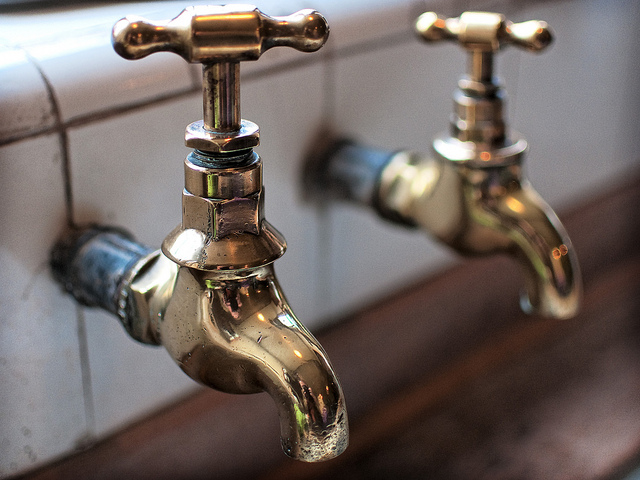
Low water pressure in the home can be incredibly frustrating and can make even the most basic of household chores nigh on impossible. Here we explore a few of the different methods to help diagnose the cause of low water pressure in the home and how to rectify these causes.
Rusted Piping
Rusted piping is not only unsightly, it can have significant negative effects upon the water pressure in your home. Check the pipes for signs of rust, following them from the taps and fixtures to the main water source. If you find any signs of rust, these could be the cause of the low water pressure due to the corrosion blocking the path of the water, inhibiting its movement.
Oversized Piping
Water pressure is significantly affected by the diameter of piping. Too narrow, and insufficient water can travel through the pipe but too wide, and the water is not channelled with sufficient speed and intensity. Whilst modern housing has regulated pipe diameter sizing, some older builds may be supported by pipes with unregulated diameters – leading to lower water pressure.
Luckily, this does not necessitate replacing the entire home’s piping – this pipe reduction kit from B&Q can help regulate the pipes and improve the home’s water pressure significantly.
Water-Saving Features
Whilst water-saving features may be incorporated for the environmental benefits they provide, they can make it impossible to have a decent shower. Double-check if your fixtures have any water-saving features which have been automatically turned on and turn them off. Common with showers, check the user manual for notification of any water-saving features which may be present. While this may effect your water conservation in your shower in a negative way, look elsewhere to make up for it. Low flow toilets and sinks can be expensive to purchase, but installing flow meters to your fixtures and monitoring your usage can help you come with other areas that you can cut back and save.
Fixture Inspection
If the low pressure is localised to a particular fixture or tap, then it may be an issue with the actual fixture itself. Turn off the water supply and remove the aerator of a tap or shower head and inspect for dirt. Thoroughly wash away any dirt or grime from the aerator and reaffix before turning the water back on.
If this still does not improve the water pressure, open the top of the tap and remove the cartridge. Again give this a good clean and replace after checking the internal body of the fixture for any blockage. Remove any blockages or grime and again test the water pressure.
Home Booster Kit
Sometimes poor water pressure is symptomatic of a larger problem, an external cause outside of personal control. Factors including the positioning of a water station and even gravity can impact upon water pressure, so a more extreme solution may be necessary. Complete Pump Supplies stock a selection of home booster sets which can help efficiently and effectively manage and improve water pressure in the home. These units can help improve the water pressure for homes in even the most problematic of areas.
